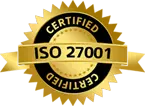Transparent Plastic Strip Inspection Automation with Machine Vision AI
Published on: May 06, 2025

Written by: Content team, Intelgic
Transparent Plastic Strip Inspection Automation with Machine Vision AI
In today’s fast-paced manufacturing landscape, transparent plastic strips are an essential material—forming the backbone of packaging in pharmaceuticals, food and beverage, consumer goods, and and medical applications. Their adaptability is unmatched, but so are the demands they place on production lines—especially when it comes to quality assurance.
Due to their transparent and flexible nature, defects are often difficult to detect with the human eye, especially at the high speeds typical of modern manufacturing lines. For decades, companies relied on manual visual inspection, a labor-intensive process prone to inconsistency and human error. Operators would scan the strips under intense lighting to identify issues like scratches, air bubbles, or foreign particles. But this approach has significant limitations: it's slow, subjective, and fails to detect subtle but critical flaws—especially in real-time, high-throughput environments.
To meet the ever-increasing demand for speed, consistency, and zero-defect manufacturing, Machine Vision AI has emerged as a transformative solution.
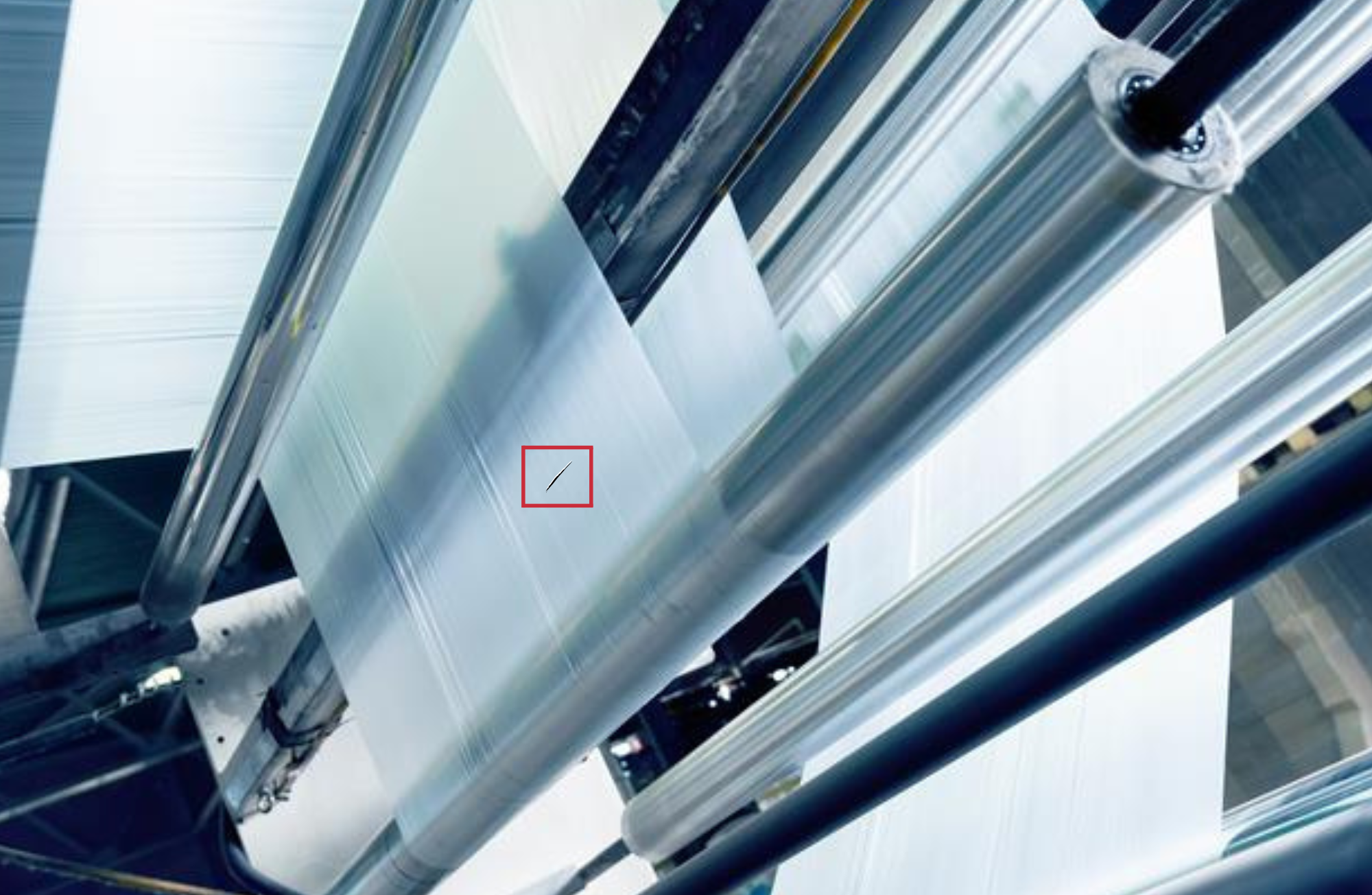
Common Defects in Plastic Strips
Although transparent plastic strips may appear flawless at first glance, their production processes are vulnerable to a wide range of defects. These flaws—often difficult to detect with the naked eye—can compromise mechanical performance, visual quality, or product safety. Below is a detailed look at the most common issues encountered during manufacturing:
- Air Bubbles and Blisters
Formed during extrusion or molding, air bubbles result from trapped gases that fail to escape the polymer matrix. Even small blisters can create weak points in the material, reduce optical clarity, and compromise sealing in packaging applications.
- Surface Scratches and Abrasions
These occur due to contact with rollers, tools, or other materials during processing and handling. While some scratches are visible, many are micron-level surface defects that only specialized imaging systems can detect. Such fine abrasions can interfere with lamination, coating adhesion, or product appearance—especially in high-clarity or optical-grade films.
- Embedded Foreign Particles or Contaminants
Microscopic dust, fibers, or other contaminants may get embedded in the plastic during extrusion or from the surrounding environment. These inclusions disrupt the uniformity and transparency of the strip and can cause performance issues in high-purity or sterile applications.
- Thickness Variations
Irregularities in the strip’s cross-section—often due to uneven material flow or cooling—can affect its tensile strength and functional consistency. In automated lines, thickness variation may cause jamming or misalignment during downstream processing.
- Wrinkles, Folds, or Creases
These deformities are typically introduced by poor web tension control or improper winding. Even small folds can make the material unsuitable for printing or lamination, leading to rework or rejection.
- Edge Cracks and Tearing
When the material is overstressed during slitting or winding, it can develop edge cracks. These may initially be microscopic but can propagate under further stress, eventually causing the strip to split or fail during use.
- Delamination in Multilayer Films
Multilayer plastic strips may suffer from poor inter-layer adhesion, causing them to peel or separate under pressure. Delamination weakens barrier properties and can lead to product failure in packaging and industrial applications.
Why Traditional Inspection Methods Fall Short
Inspecting transparent plastic strips poses significant challenges that conventional methods struggle to overcome. Key limitations include:
- Low Contrast in Transparent Materials
Transparent plastics offer minimal visual contrast, making it extremely difficult to spot defects such as air bubbles, micro-scratches, or embedded particles—especially under normal lighting conditions.
- High-Speed Production Lines
Plastic strips often move at high speeds, drastically reducing the time available for inspection. Human inspectors cannot match the pace without sacrificing accuracy.
- Lighting and Visibility Issues
Bright factory lighting can cause reflections, glare, and inconsistent illumination. Some defects may only be visible from certain angles, and can easily be missed during routine checks.
- Human Limitations and Fatigue
Manual inspection is heavily dependent on the inspector’s focus and physical endurance. Prolonged shifts, repetitive tasks, and eye strain lead to reduced detection rates and inconsistent results.
- Scalability Challenges
As production demands grow, manual inspection becomes increasingly inefficient. Slowing down the line to enable thorough checking is not practical for manufacturers aiming to maintain high throughput.
- Lack of Traceability and Data Capture
Traditional methods offer no automated data recording or defect classification. Without inspection logs or analytics, identifying recurring issues and optimizing processes becomes nearly impossible.
- Inconsistent Accuracy and Repeatability
Manual inspections are subjective and vary between operators. This inconsistency can result in defective materials passing unnoticed or good products being unnecessarily rejected.
The Modern Approach of Machine Vision AI System
In response to the limitations of traditional inspection methods, manufacturers are increasingly turning to advanced imaging technologies to ensure precision and quality. Line scan cameras and diffuse backlighting offer a powerful, real-time solution for inspecting transparent plastic strips, providing unparalleled accuracy even when detecting micron-level defects that the human eye cannot see.
Line Scan Cameras: Precision in Motion
Line scan cameras offer a revolutionary approach to high-speed inspection, ensuring continuous, high-resolution monitoring of transparent plastic strips. Here’s how they work:
- Single Line Capture
- Unlike area scan cameras, line scan cameras capture one line of pixels at a time, building a continuous image as the material moves beneath.
- Unlike area scan cameras, line scan cameras capture one line of pixels at a time, building a continuous image as the material moves beneath.
- Seamless Coverage
- This method guarantees complete coverage of the entire strip, even at high speeds, ensuring no part is missed.
- This method guarantees complete coverage of the entire strip, even at high speeds, ensuring no part is missed.
- High-Resolution Detection
- Line scan cameras detect micron-level defects like scratches, air bubbles, and embedded particles, which often escape traditional inspection methods.
- Line scan cameras detect micron-level defects like scratches, air bubbles, and embedded particles, which often escape traditional inspection methods.
- Real-Time Analysis
- Every inch of the strip is captured and analyzed in real-time, ensuring precise quality control throughout the production process.
- Every inch of the strip is captured and analyzed in real-time, ensuring precise quality control throughout the production process.
- High-Speed Efficiency
- Ideal for high-speed production lines, line scan cameras offer continuous inspection without slowing down the process, making them perfect for modern manufacturing where efficiency is key.
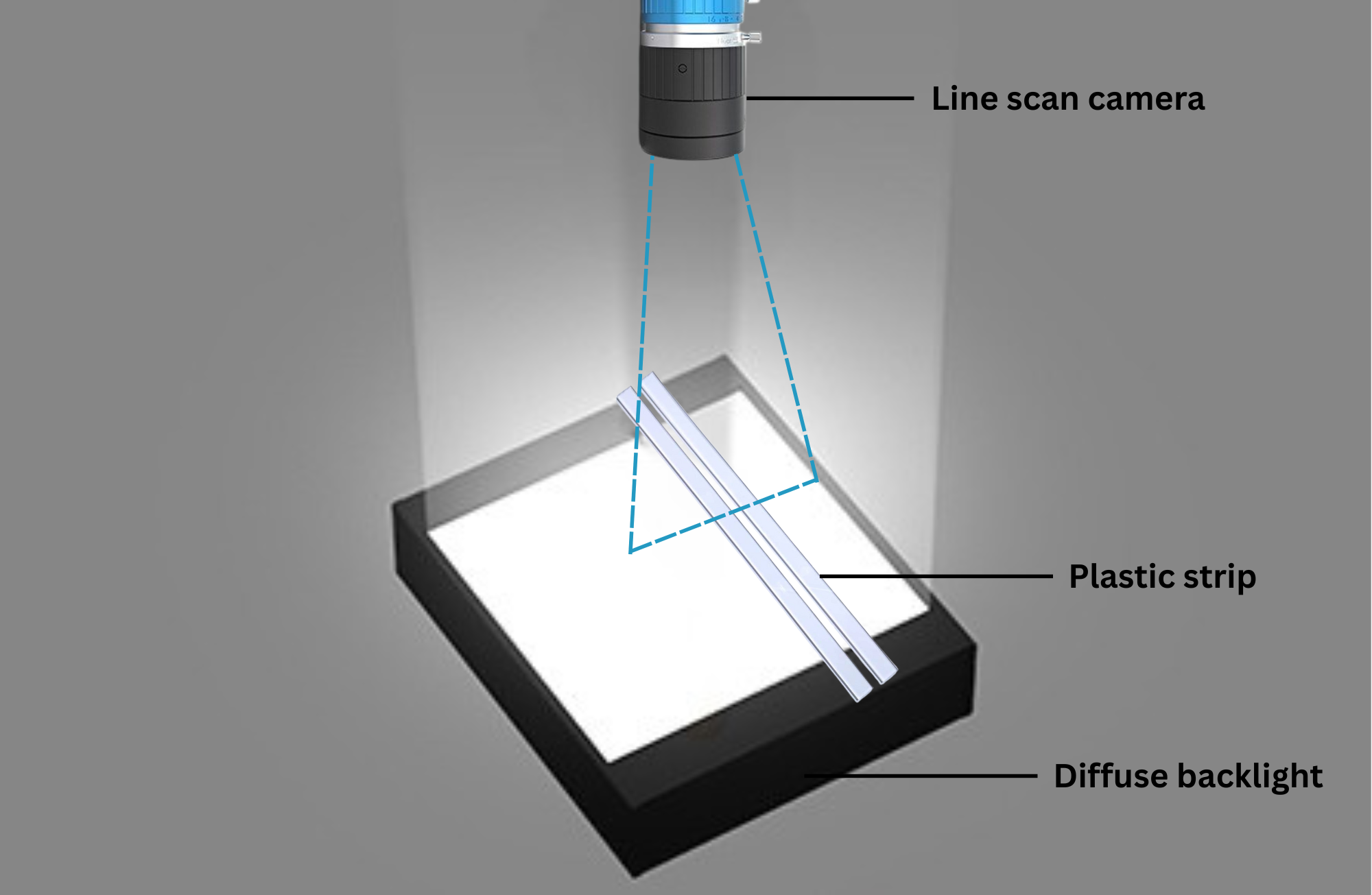
Diffuse Backlighting: Illuminating the Imperfections
When inspecting transparent materials like plastic strips, achieving optimal contrast is one of the key challenges. Diffuse backlighting is an advanced lighting technique specifically designed to overcome this obstacle.
In this setup, a uniform light source illuminates the material from behind, ensuring that the strip is evenly lit across its entire surface. This technique highlights even the most subtle defects—whether they are micron-level surface imperfections or structural inconsistencies—by casting a clear shadow or contrast in the image. As a result, defects that might otherwise remain invisible, such as small bubbles or micro-scratches, become immediately noticeable.
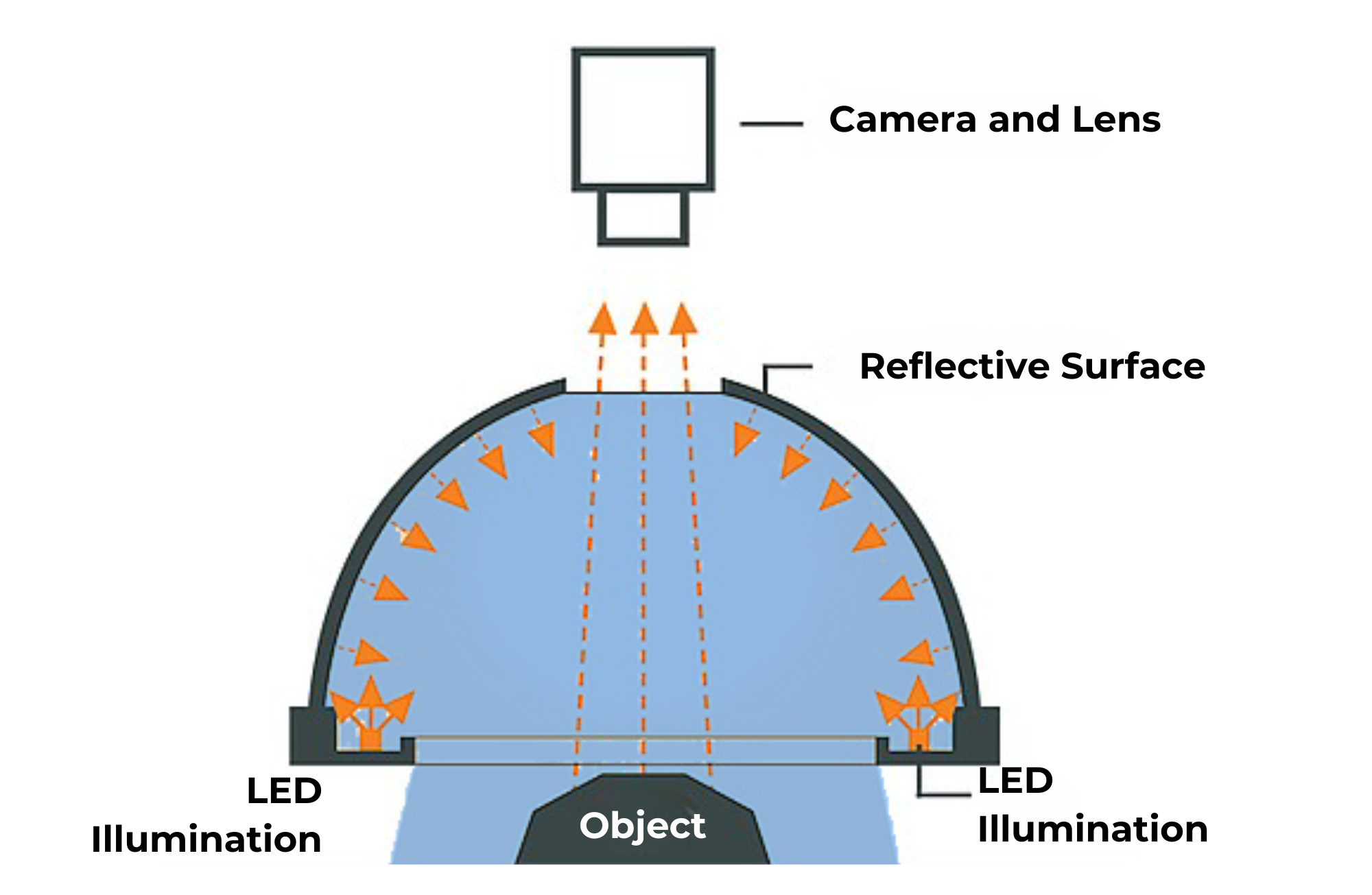
AI Software in Detecting Micron-Level Defects
By pairing line scan cameras and diffuse backlighting with AI-powered vision software, manufacturers can achieve a new level of quality control. The software analyzes the high-resolution images captured by the cameras and uses advanced algorithms to detect defects down to the micron level. It can recognize tiny variations in texture, shape, and light transmission, which are indicative of defects such as:
- Micro-scratches that could compromise the strip's appearance or functionality
- Tiny air bubbles that may weaken the material's structure
- Surface abrasions that are undetectable by human inspectors
- Inconsistent thickness variations that are only visible through precise imaging
AI software not only detects these imperfections but also classifies them by severity and flags them for further action—whether that's rejecting the affected material or notifying operators for corrective measures. This ensures that even the smallest defects are addressed before they become major issues.
Inspection Workflow
- Material Movement
- The transparent plastic strip moves along the production line at high speed, passing beneath the line scan camera.
- The transparent plastic strip moves along the production line at high speed, passing beneath the line scan camera.
- Image Capture
- The line scan camera captures one line of pixels at a time, building a continuous image as the strip moves.
- The line scan camera captures one line of pixels at a time, building a continuous image as the strip moves.
- Lighting & Contrast Enhancement
- Diffuse backlighting illuminates the material from behind, highlighting even the most subtle imperfections by casting shadows or creating contrast, making defects visible.
- Diffuse backlighting illuminates the material from behind, highlighting even the most subtle imperfections by casting shadows or creating contrast, making defects visible.
- Real-Time Defect Detection
- The AI-powered software analyzes each captured image in real-time, detecting defects such as scratches, air bubbles, embedded particles, and micron-level variations.
- The AI-powered software analyzes each captured image in real-time, detecting defects such as scratches, air bubbles, embedded particles, and micron-level variations.
- Defect Classification
- The software categorizes detected defects based on severity and type, flagging any that need attention.
- The software categorizes detected defects based on severity and type, flagging any that need attention.
- Operator Notification/Action
- The system alerts operators or triggers automated actions (e.g., ejecting defective segments or reworking them) based on the severity of the defects.
- The system alerts operators or triggers automated actions (e.g., ejecting defective segments or reworking them) based on the severity of the defects.
- Data Logging & Reporting
Every inspection is logged, providing valuable data for quality records, audits, and continuous process improvement.
Benefits of Machine Vision AI Integration
Integrating AI-powered Machine Viision systems into plastic strip production brings numerous benefits, enhancing precision, efficiency, and reliability:
- Non-Stop, Real-Time Inspection
- AI systems provide continuous, real-time inspection, detecting defects instantly without slowing down production, ensuring optimal throughput.
- AI systems provide continuous, real-time inspection, detecting defects instantly without slowing down production, ensuring optimal throughput.
- Accurate Detection of Invisible Defects
- AI systems can identify micron-level defects, like tiny scratches, air bubbles, and embedded particles, that traditional methods often miss, ensuring complete quality control.
- AI systems can identify micron-level defects, like tiny scratches, air bubbles, and embedded particles, that traditional methods often miss, ensuring complete quality control.
- Consistent, Repeatable Results
- AI-driven systems deliver consistent, repeatable results, free from human error or fatigue, maintaining uniformity across all production batches.
- AI-driven systems deliver consistent, repeatable results, free from human error or fatigue, maintaining uniformity across all production batches.
- Scalability Across Materials, Widths, and Line Speeds
- AI systems are highly scalable, adaptable to different materials, widths, and production speeds, offering flexibility for manufacturers.
- AI systems are highly scalable, adaptable to different materials, widths, and production speeds, offering flexibility for manufacturers.
- Traceable Inspection Records
- Detailed, traceable inspection records are generated in real time, ensuring compliance and providing valuable data for process improvements and audits.
- Detailed, traceable inspection records are generated in real time, ensuring compliance and providing valuable data for process improvements and audits.
- Reduced Waste and Higher Customer Satisfaction
- AI systems catch defects early, leading to reduced waste, fewer returns, and higher customer satisfaction due to better product quality.
- AI systems catch defects early, leading to reduced waste, fewer returns, and higher customer satisfaction due to better product quality.
- Smarter Manufacturing
- Transitioning to AI-based inspection is not just a technological upgrade but a strategic move towards smarter, more efficient manufacturing, keeping manufacturers competitive.
Industry Applications of Plastic Strips
Plastic strips are integral to various industries, where their quality and precision are paramount. AI-powered inspection technology plays a key role in ensuring these materials meet the highest standards across multiple sectors:
- Pharmaceutical Packaging: In this sector, plastic strips are used for blister packs, seals, and packaging where purity and transparency are essential. Imperfections can compromise product integrity, so flawless plastic strips are critical for safety.
- Medical Devices: Plastic strips used in medical devices, such as sterile packaging and protective covers, must be free from defects to maintain sterile conditions and ensure patient safety.
- Food and Beverage: Transparent plastic strips are commonly used for tamper-evident seals, ensuring that food products remain secure and fresh, while also providing traceability.
- Consumer Electronics: Many electronic devices use protective plastic layers for screens or packaging. These strips must be defect-free to ensure performance, durability, and aesthetic appeal.
- Automotive Industry: Plastic strips are utilized in sealing systems within automotive components. Their quality ensures weatherproofing, durability, and overall system efficiency in demanding environments.
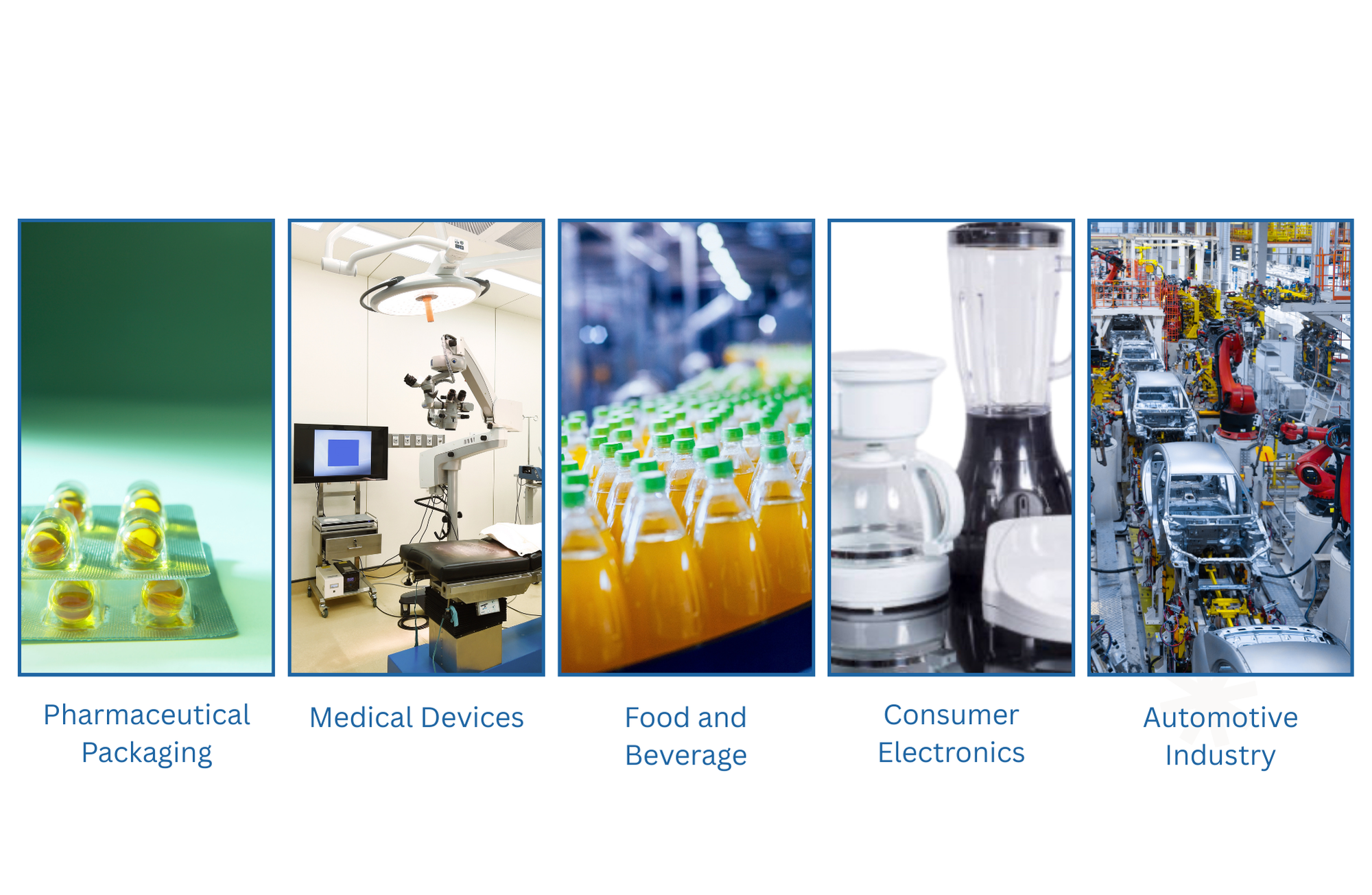
Intelgic: Pioneering Intelligent Machine Vision Solutions
Intelgic leads the way in providing advanced AI-driven vision systems tailored to meet the unique challenges of plastic strip inspection. Offering a range of solutions designed for precision, efficiency, and scalability, Intelgic ensures that manufacturers can achieve the highest quality standards in their production lines.
With high-resolution line scan cameras, customizable diffuse backlighting systems, and AI-powered software, Intelgic delivers:
- Accurate Defect Detection: Identifying even the smallest imperfections, including micron-level defects, with unmatched precision.
- Real-Time Inspection: Enabling continuous monitoring without interrupting production flow, ensuring non-stop quality control.
User-Friendly Interfaces: Providing easy-to-use dashboards and reporting tools that allow for quick access to inspection data and insights.
Whether you’re looking to implement a standalone defect detection system or integrate into an existing smart factory infrastructure, Intelgic offers tailored solutions to elevate your manufacturing processes and enhance product quality.
Inspecting transparent plastic strips is no longer a task reserved for human eyes and guesswork. With the advent of line scan imaging, diffuse backlighting, and AI vision software, manufacturers can now see the invisible, inspect at speed, and respond in real time. These systems bring precision, efficiency, and intelligence to the heart of production—where it matters most.
As industries evolve, quality expectations rise. And with Intelgic's expert solutions, manufacturers are well-equipped to meet those expectations with confidence and control.
